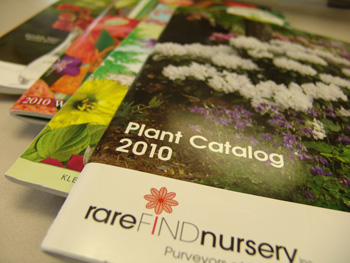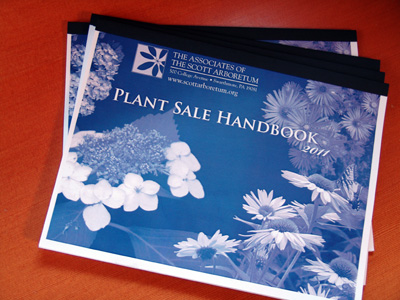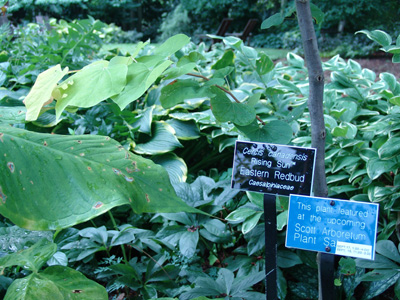More than Just a Plant Catalog
 Once an order for new plants is placed at the start of each gardening season most plant catalogs end up in the trash, while a select few end up on the reference shelf. Gardeners and gardening professionals often save certain catalogs because they serve as great references for cultural information and practical gardening advice.
Once an order for new plants is placed at the start of each gardening season most plant catalogs end up in the trash, while a select few end up on the reference shelf. Gardeners and gardening professionals often save certain catalogs because they serve as great references for cultural information and practical gardening advice.

Plant catalogs can make a good addition to your reference shelf. photo credit: R. Robert
These distinctive catalogs provide information above and beyond the standard plant picture and sun/shade requirements. The Scott Arboretum curatorial office collection of plant catalogs for reference includes Creek Hill Nursery, Pleasant Run Nursery, and Rare Find Nursery among others. These catalogs feature excellent plant pictures, informative cultural information, and insightful firsthand accounts of growing the plants.

The Plant Sale Handbook has more than a list of plants available at the sale. photo credit: R. Robert
Scott Associates Plant Sale Handbooks can also be found on many gardeners’ reference shelves. More than just plant catalogs for the Plant Sales, they feature detailed cultural information and insightful comments on the over 300 plants available at each sale. For example, this description elaborates on the virtues of Crytomeria japonica ‘Sekken-sugi’, Japanese cedar (page 17) in the 2011 Plant Sale Handbook.
The striking creamy yellow new growth shines like a beacon among contrasting foliage plants and gradually turns more green in the summer heat. Maintains its pyramidal form as it ages. Site where it will be protected from winds and extreme sunlight. Best when grown in light shade.

Blue plant tags indicate Plant Sale plants growing in the gardens of the Scott Arboretum. photo credit: R. Robert
The descriptive listings also identify the locations of plants at the Scott Arboretum. Thus gardeners can see how the plants grow in the garden. Cryptomeria japonica ‘Sekkan-sugi’ can be found near Sharples Dining Hall on campus.
Beyond individual plant descriptions, the handbook provides plant suggestions for specific gardening needs. For example on page 51 you can identify woody and perennial plants that deer might ignore. If you are a gardener with dry shade conditions, 15 plants are recommended for your garden on page 52.
These resource lists include:
Drought Tolerant Plants – page 51
Dry Shade Plants – page 52
Evergreen – page 52
Groundcover Plants – page 53
Native Plants East of the Mississippi – page 53
Wet Tolerant Plants – page 54
Winged Wonders Plants (to attract birds, hummingbirds, and butterflies) – page 54
Winter Interest Plants – page 55
In addition to considerations about individual plants, there are step-by-step instructions on planting containers (page 56) and balled and burlapped plants (page 57).
I encourage you download this robust tool to learn more about the plants you may already have in your garden or to get great gardening ideas for your unique growing situation. Members can pick up a bound copy at the Scott Arboretum offices or have a copy mailed to them for $3.00. It is a great addition to any reference shelf.





No Comments